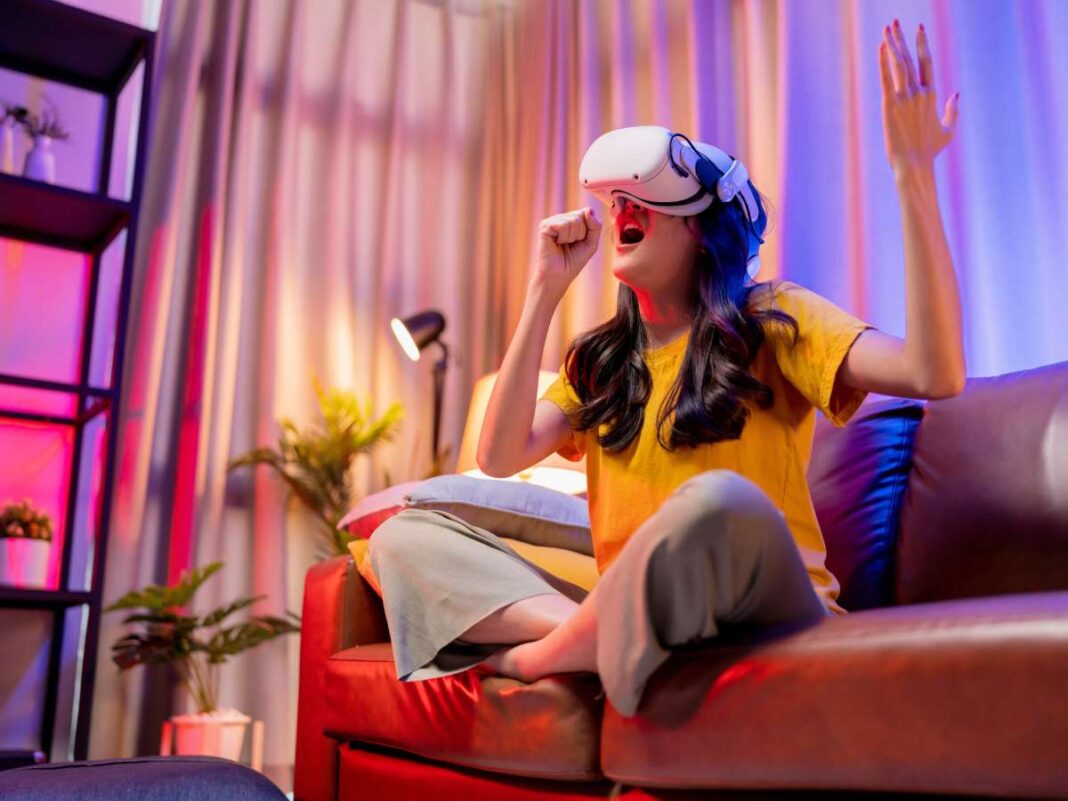The world of live music is undergoing a transformation, thanks to the arrival of virtual reality (VR) technology. VR concerts are redefining how fans experience live performances, breaking down geographical barriers and creating immersive environments that were once unimaginable. From attending a live show of your favorite artist without leaving your living room to exploring fantastical concert venues beyond the constraints of the physical world, VR is reshaping the live music landscape.
The Emergence of VR Concerts
The concept of VR concerts gained significant traction in recent years as people look for alternative ways to experience live events. In 2019, DJ Marshmello hosted one of the first major virtual concerts within the video game Fortnite, attracting over 10 million viewers worldwide. This groundbreaking event paved the way for other artists to explore VR platforms.
In 2020, rapper Travis Scott took VR concerts to new heights with his spectacular Fortnite performance, drawing over 12 million viewers globally. His concert featured floating stages, giant avatars, and synchronized animations that pushed the boundaries of traditional live performances. These early successes showed the immense potential of VR to create unique and engaging concert experiences.
Revolutionizing the Live Music Experience
VR concerts offer fans an unprecedented level of immersion and interactivity. Through VR headsets, attendees can feel as though they are physically present at the event, enjoying immersive 3D environments, real-time camera switching, and positional audio. Platforms like Oculus Venues enable fans to experience concerts from the virtual front row, cheering alongside others and even interacting with fellow attendees.
Artists are embracing VR to expand their creative expression, designing concert experiences that transcend the limitations of physical venues. Platforms like WaveXR allow performers to transform into interactive digital avatars, performing in surreal environments with jaw-dropping visuals and physics-defying landscapes. Artists such as The Weeknd and John Legend have utilized this technology to deliver performances that are impossible to replicate in the real world.
Benefits for Fans and Artists
One of the most significant advantages of VR concerts is the removal of geographical and logistical barriers. Fans from around the globe can attend live performances without the need for travel, reducing costs and accessibility issues. This democratization of access means that more people can experience live music than ever before.
For artists, VR concerts offer the opportunity to reach more people and explore new forms of artistic expression. By leveraging VR technology, performers can craft imaginative worlds that align with the narrative of their music, incorporating fantastical settings and interactive visual effects that enhance the overall experience.
Moreover, VR concerts provide unmatched levels of personalization. Attendees can choose their viewing angles, explore backstage areas, or interact with virtual avatars of artists, fostering a deeper connection between fans and performers. This enhanced intimacy creates a sense of inclusion and participation in the creative process.
Technological Innovations Driving VR Concerts
The success of VR concerts relies on advanced technologies that create immersive and interactive experiences. Developers employ sophisticated 3D design, audio engineering, artificial intelligence, and haptic feedback to craft realistic virtual environments and ensure immersive sound quality. Innovations like augmented reality (AR) integration and blockchain technology are also enhancing fan experiences and offering secure digital ticketing systems.
Platforms like MelodyVR have been at the forefront of delivering VR concert experiences. By allowing users to view concerts from various perspectives, including backstage and onstage, MelodyVR provides unique access to performances by artists such as Kelly Clarkson, Wiz Khalifa, and Lewis Capaldi.
Challenges and Limitations
Despite the promise of VR concerts, several challenges remain. The high cost of quality VR equipment can be a barrier for some fans, limiting widespread adoption. Additionally, replicating the energy and atmosphere of physical concerts in virtual spaces poses artistic and technical difficulties. Some fans may miss the human connection and shared emotions that come with attending live events in person.
Artists may also be hesitant to fully embrace VR concerts due to concerns about monetization, piracy, or the lack of established norms in this emerging field. Nonetheless, the industry continues to explore solutions to these challenges, with ongoing investments in technology and efforts to enhance the accessibility and quality of VR experiences.
The Future of Live Music
Virtual reality concerts are poised to redefine the live music landscape, offering innovative ways to connect artists and audiences. As technology continues to advance, VR concerts may become an integral part of the music industry, complementing traditional live performances rather than replacing them.
The integration of VR and AR technologies promises to deliver immersive, interactive experiences, merging auditory and visual elements to enhance creativity and expand accessibility for consumers worldwide. With the potential to break down barriers of cost, distance, and accessibility, VR concerts represent a significant shift in how music is produced, shared, and enjoyed globally.
In conclusion, virtual reality concerts are not just a trend but a transformative force in the entertainment industry. By blending technology and artistry to redefine the concert experience, VR is opening new frontiers for artists and fans alike, shaping the future of live music in both physical and digital realms.

